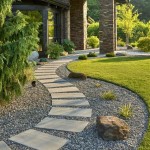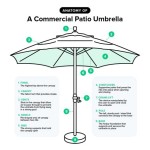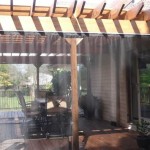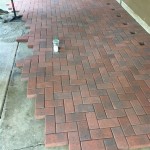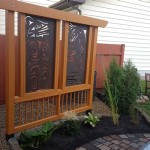How to Make Cement Patio Blocks
Cement patio blocks offer a durable and versatile solution for creating outdoor living spaces. Constructing these blocks oneself can be a cost-effective alternative to purchasing pre-made versions, allowing for customization in design, size, and color. This article outlines the step-by-step process for creating cement patio blocks, providing a comprehensive guide for achieving professional-looking results.
Before embarking on the project, it is crucial to understand the materials and equipment required. A well-prepared workspace and access to the necessary tools will contribute significantly to the efficiency and success of the endeavor.
Gathering Materials and Equipment
The primary materials required for making cement patio blocks are cement, sand, and aggregate. Portland cement is the binding agent that holds the mixture together. Construction-grade sand, free of organic matter, provides bulk and strength. Aggregate, such as gravel or crushed stone, adds further stability and reduces shrinkage. The proportions of these materials are essential for achieving a durable and long-lasting block. A common ratio for a strong mix is 1 part cement, 2 parts sand, and 3 parts aggregate. This ratio can be adjusted slightly based on the specific type of aggregate used and the desired texture of the finished block.
In addition to the core materials, water is required to hydrate the cement and create a workable mixture. The water should be clean and free of impurities that could interfere with the curing process. Additives, such as color pigments or reinforcing fibers, can be incorporated to enhance the aesthetic appeal or structural integrity of the blocks. Color pigments specifically designed for concrete are readily available and can be added to the mix to achieve a wide range of hues. Reinforcing fibers, such as polypropylene or fiberglass, can improve the tensile strength of the blocks, making them more resistant to cracking.
The necessary equipment includes mixing tools, molds, a trowel, a measuring container, personal protective equipment (PPE), and a vibration source. A concrete mixer is ideal for large batches, ensuring thorough and consistent mixing. For smaller projects, a wheelbarrow or mixing tub can be used, along with a shovel or hoe for manual mixing. Molds define the shape and size of the patio blocks. These can be purchased commercially or constructed from wood, plastic, or rubber. A trowel is used for smoothing the surface of the wet concrete. Measuring containers ensure accurate proportioning of the materials. PPE, including gloves, safety glasses, and a dust mask, protects against potential hazards associated with handling cement. A vibratory source, such as a concrete vibrator or even a rubber mallet, helps to consolidate the wet concrete in the molds, removing air pockets and ensuring a dense, uniform block.
Finally, a level is needed to ensure the blocks are level when placed in the molds and a finishing tool such as a sponge or a broom to apply a texture if desired.
Mixing and Pouring the Concrete
The mixing process is critical to the quality of the cement patio blocks. The dry ingredients (cement, sand, and aggregate) should be thoroughly mixed together before adding water. This ensures a uniform distribution of the cement throughout the mixture. In a concrete mixer, the dry ingredients can be added simultaneously. When mixing manually, it is best to layer the ingredients, gradually combining them as you mix.
Once the dry ingredients are well mixed, water should be added gradually while continuing to mix. The amount of water required will vary depending on the moisture content of the sand and aggregate. The goal is to achieve a consistency that is workable but not too wet. The mixture should be thick enough to hold its shape when squeezed in your hand, but not so dry that it crumbles. Avoid adding too much water, as this can weaken the finished blocks.
If adding color pigments, they should be mixed with the dry ingredients before adding water. This ensures even distribution of the color throughout the concrete. Reinforcing fibers can be added after the water, mixing them in thoroughly to prevent clumping.
After the concrete is mixed to the desired consistency, it is time to pour it into the molds. The molds should be clean and lightly oiled to prevent the concrete from sticking. Fill each mold completely, ensuring that the concrete reaches all corners and edges. Overfill the molds slightly to compensate for settling.
Once the molds are filled, the concrete should be consolidated to remove air pockets. This can be done using a concrete vibrator, by tapping the sides of the molds with a rubber mallet, or by rodding the concrete with a stick. The goal is to force out any trapped air, resulting in a denser, stronger block. After vibrating, use a trowel to smooth the surface of the concrete, removing any excess and creating a level finish. If desired, a texture can be applied using a sponge, broom, or other suitable tool.
Curing and Finishing the Blocks
Curing is the process of maintaining adequate moisture and temperature to allow the cement to hydrate and gain strength. Proper curing is essential for achieving durable and long-lasting cement patio blocks. The curing process can take several days or even weeks, depending on the ambient temperature and humidity.
The most common method of curing concrete is to keep it moist. This can be achieved by spraying the blocks with water periodically, covering them with plastic sheeting, or submerging them in water. The goal is to prevent the concrete from drying out too quickly, which can lead to cracking and reduced strength. The blocks should be kept moist for at least seven days, and preferably longer.
Temperature also plays a critical role in the curing process. Concrete cures best at temperatures between 50°F and 85°F (10°C and 29°C). If the temperature is too low, the hydration process will slow down, resulting in weaker blocks. If the temperature is too high, the concrete can dry out too quickly, leading to cracking. In hot weather, it may be necessary to shade the blocks to prevent them from overheating. In cold weather, it may be necessary to insulate the blocks to keep them warm.
Once the blocks have cured for the recommended time, they can be removed from the molds. This should be done carefully to avoid damaging the blocks. If the blocks are stuck in the molds, gently tapping the molds or using a rubber mallet may help to release them. After demolding, the blocks should be allowed to air dry completely before being used.
After the blocks are fully cured and dry, any imperfections can be addressed. Minor chips or cracks can be repaired with a concrete patching compound. The blocks can also be sealed with a concrete sealant to protect them from staining and weathering. Sealing the blocks will also enhance their color and give them a more finished appearance.
The created cement patio blocks are now ready for use. Proper installation onto a prepared base is crucial for stability and longevity. Consider the area’s water drainage to prevent block damage and ground erosion under the patio.
Making cement patio blocks is a rewarding DIY project that allows for customization and cost savings. By following these steps and taking care throughout the mixing, pouring, and curing processes, one can create durable and aesthetically pleasing patio blocks for outdoor living spaces.

Diy Concrete Patio In 8 Easy Steps How To Pour A Cement Slab

Patio Blocks Make Your Own Soil Cement Diy Pavers

How To Make A Patio From Concrete Pavers Ron Hazelton

How To Make Patio Blocks Quick And Easy From Concrete Diy

Patio Blocks Make Your Own Soil Cement Diy Pavers

Concrete Patio With Pavers Flagstones

Diy Paver Patio And Firepit Life On Shady Lane

How To Make Patio Blocks Quick And Easy From Concrete Diy

How To Plan And Build A Concrete Paver Patio Artsy Pretty Plants

How To Install Concrete Pavers Ask This Old House
Related Posts


